Chabówka 2021-07-31
Passenger cars type Bi, No. 09 205. 2021 year.
Passenger cars of the Bi series were a development of the passenger cars of the Ci series. The structure was built in 1928. It was still a two-axle wagon. The purpose of the construction was to increase the comfort of travel. The main thing was building the bridges. The passage between the wagons has become safer. The windows were enlarged and now had dimensions of 1.0 m x 1.0 m. Since the length of the car remained unchanged, the number of these windows decreased from 6 to 5 on one side of the car. Plus a narrow toilet window as it was before. The number of seats in the car decreased to 48, but the space for one passenger increased significantly.
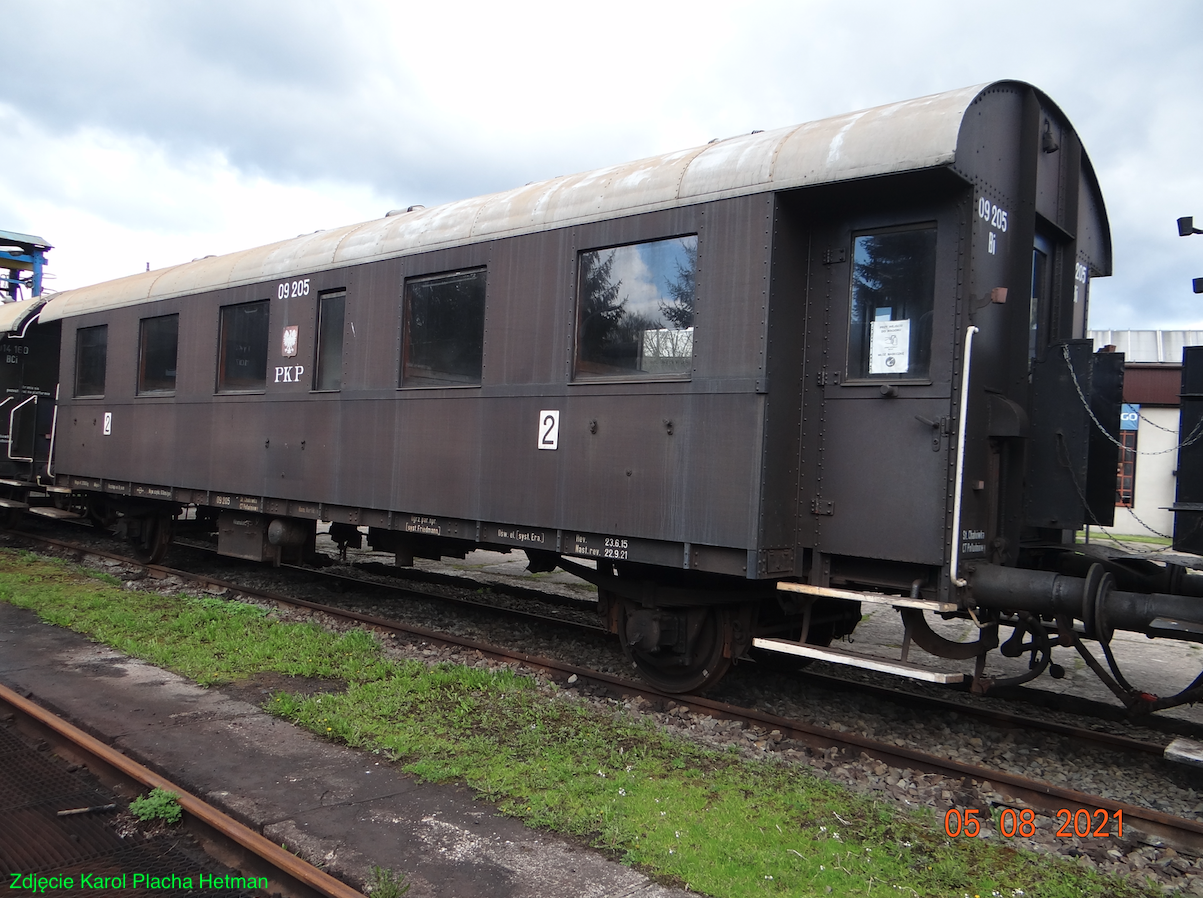
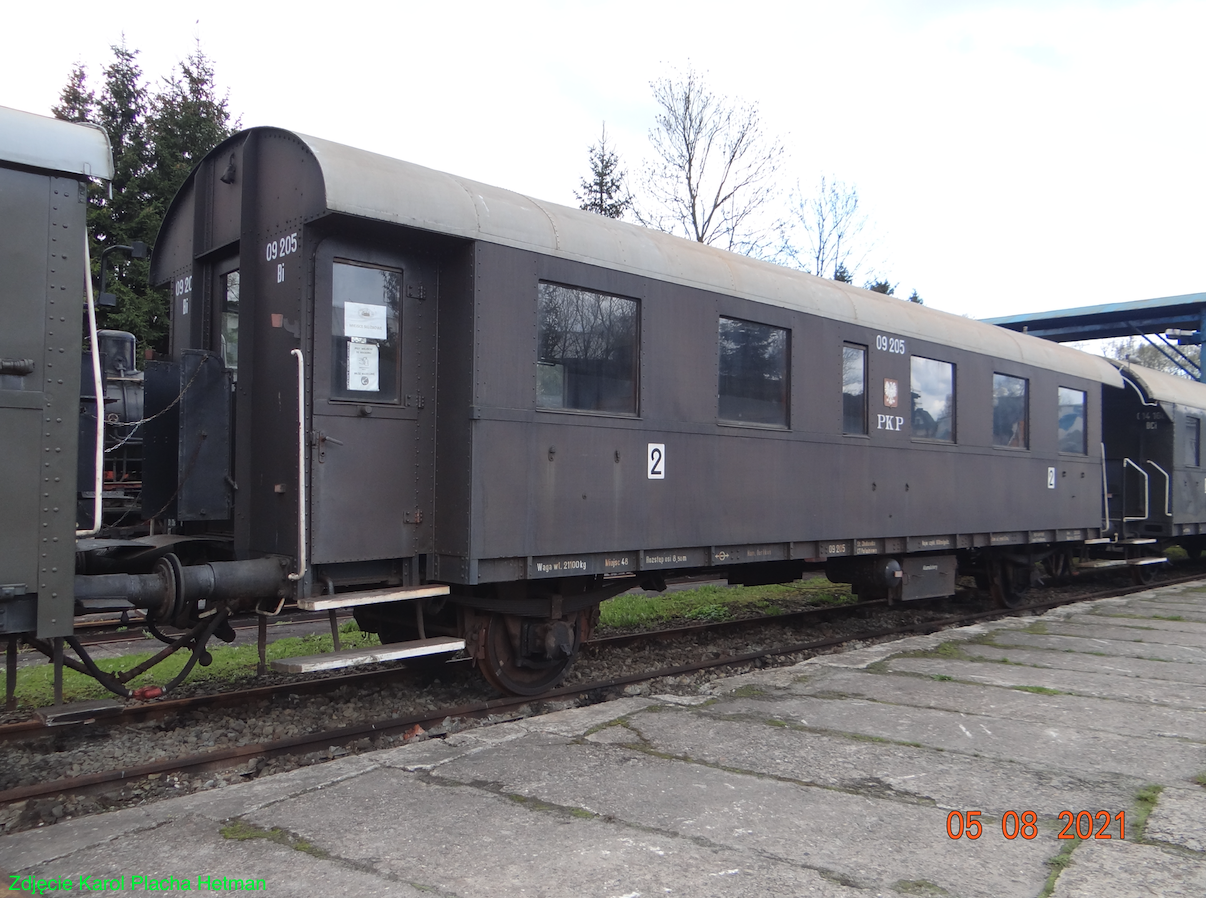
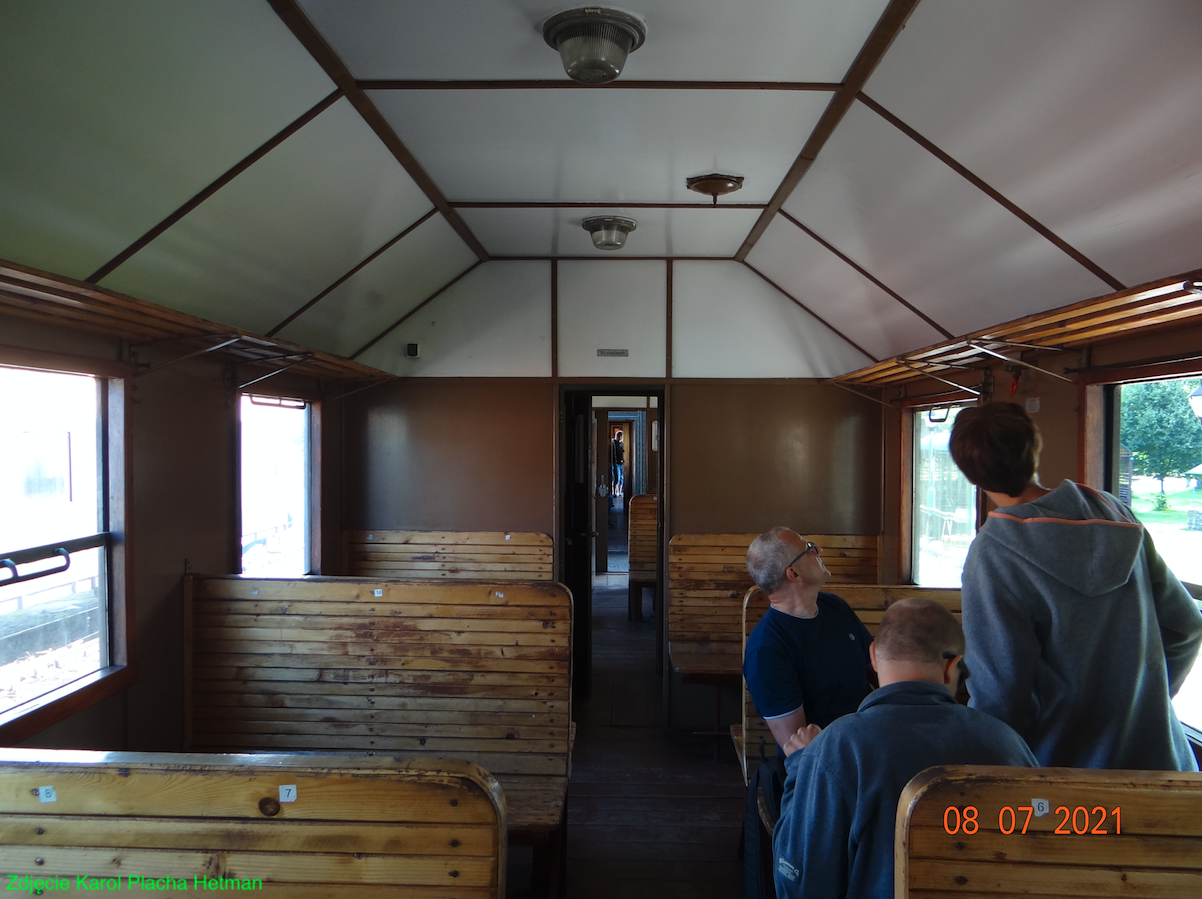
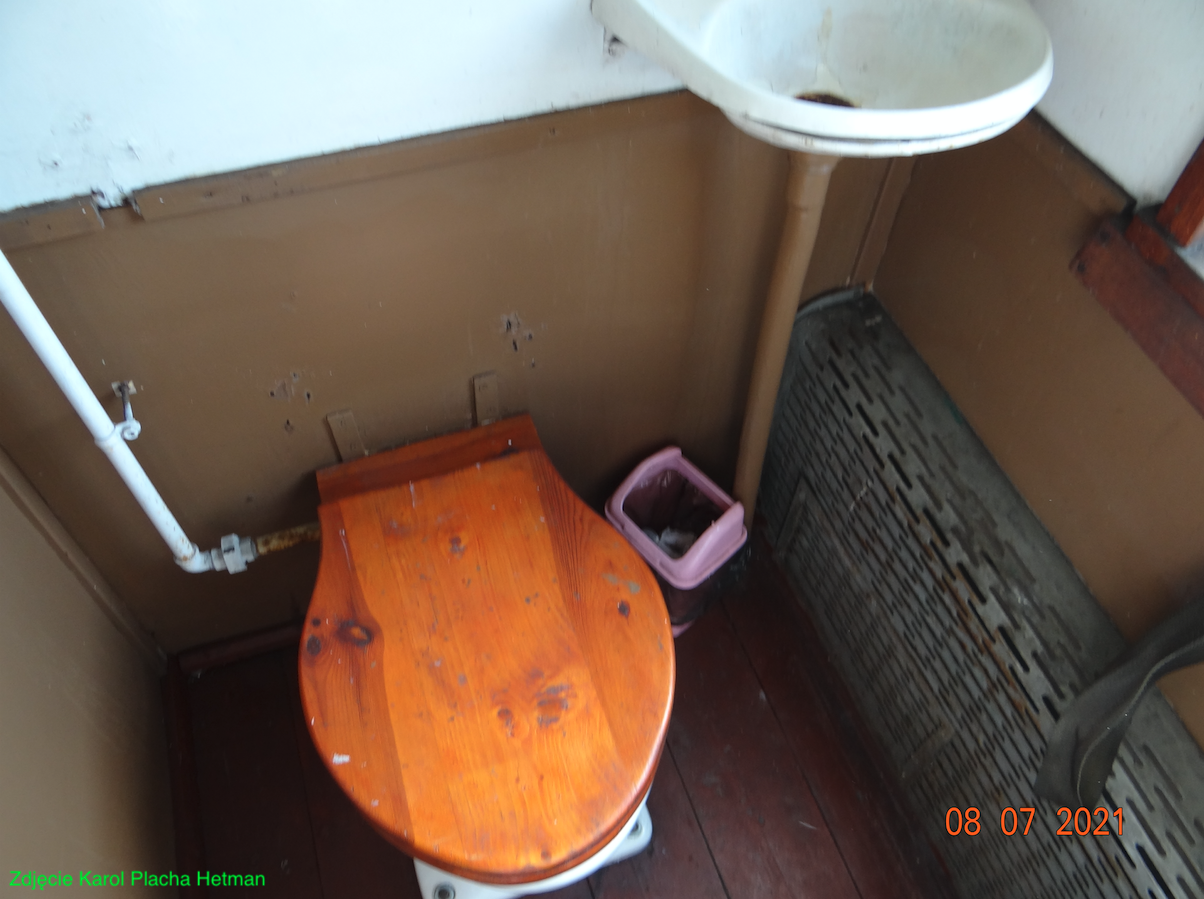
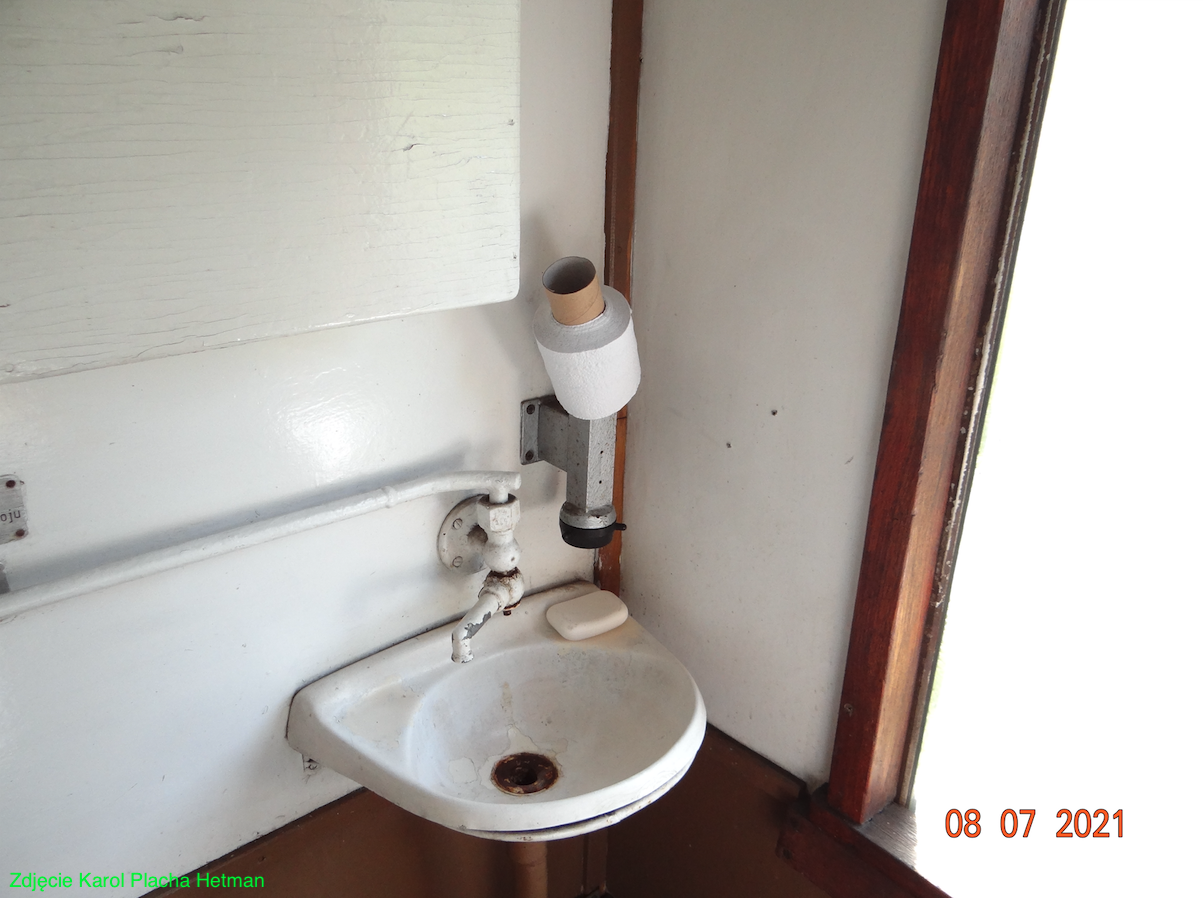
Photo description: The faucet has a bill of exchange valve. Turning the spout opens or closes the tap. Spout pointing to the side - Water does not flow out. Spout facing straight ahead - Water leaks.
Bi-type wagons were built by many factories in Europe. These wagons have a steel, riveted construction (frame) with a sheet metal sheathing of the body. The entire interior of the car is made of wood. In addition to closed vestibules, the car has open passenger compartments with a central passage along the car. The arrangement of benches in the wagons was different, depending on the manufacturer and the needs of the customer. The lighting in the car was electric, with dim bulbs. If there were soft benches in the car, the PKP cars were marked as type Ai.
After World War II in Poland, wagons of the series: Bi, Ci were not produced. It is estimated that in 1945, there were 100 - 120 wagons of this type in PKP. Already in the 60s of the twentieth century, these wagons were running on subordinate lines. Because the wagons in question have a metal structure, they were used in PKP for a long time. As a result, they underwent several renovations and modifications. The running gear of the wagons was improved. The heating and lighting system was modernized. The seats have been replaced with more comfortable ones. After the liquidation of class 3, all wagons were standardized for class 2. The last Bi-type wagons ended their service at PKP in the 80s of the 20th century.
Bi-type passenger car, No. 09 205:
This wagon was built in 1929 by the German factory Beuchelt & Co. (Fabrik für Brückenbau und Eisenkonstruktionen Beuchelt - Factory of Bridges and Steel Structures Beuchelt) in Zielona Góra, later ZASTAL.
In 1991, the car was renovated to include it in RETRO trains. In June 2015, the last renovation of this car was completed. During the renovation, the car's pillars and body sheathing were replaced. The renovation made it possible to include the wagon in the RETRO trains that run during the holidays, on Saturdays and Sundays. Usually, these were routes to Kasina Wielka or Jordanów, depending on the track works.
T-T data of the Bi-type wagon:
Total length 14.04 m. Wheelbase 8.50 m. Number of seats 48. Design speed 60 km/h. Steam heating.
Written by Karol Placha Hetman
